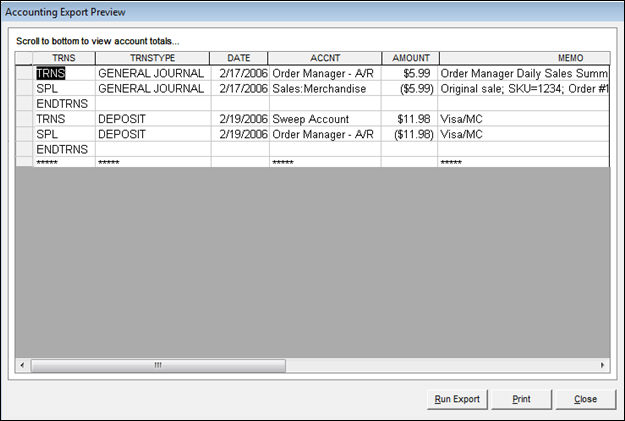

Web TimeSheet – QuickBooks Integration using IIF file supports unidirectional data transfer.
IMPORTING TRANSACTIONS INTO QUICKBOOKS VIA .IIF FILES HOW TO
For more information on how to import the IIF file, refer to QuickBooks' documentation. – Import the saved IIF file by selecting File > Utilities > Import > Timer Activities, and opening the file you generated.ĭepending on which version of QuickBooks you are using, the file import method may differ. * To import the IIF file into QuickBooks: When prompted, save the IIF data file that Web TimeSheet creates. Once you have what you want to export you can click on 'QuickBooks' to generate the 'IIF' file. * Once you have filled in the correct details, you can click on ' Generate' to view the results on screen. 'Not previously exported' :- Data not transferred previously for the timesheet period selected. 'All' :- All the data for that timesheet period

* You can generate the export for 'All' data or 'Not previously exported' data. Web TimeSheet Field :- … maps to QuickBooks FieldĬlient User Defined Field 10 :- Revenue Account Therefore, do not include double colons in Web TimeSheet fields you intend to transfer to QuickBooks. In QuickBooks, fields containing double colons ("::") are interpreted as empty. Only approved time sheets will be included in the export. To transfer a project for invoicing that has no client associated with it, create a generic client in Web TimeSheet such as "No Client" with no billing rate, and select that account to define User Defined Field #10. This field is mapped to the Revenue Account field in QuickBooks. If you select this option, you can still create a client invoice manually from within QuickBooks.Ĭlient Invoice – If you select this option, you must first define User Defined Field #10 for clients associated with time to be exported. PITEM refers to a payroll item, which you may map to a Web TimeSheet timesheet row level user defined field.Īdvanced Settings: In the Export time to QuickBooks as field, specify whether you would like to export time data to QuickBooks as: In the Select Data to Export field: Specify which data you would like to export, and, if applicable, how you would like that data to map in QuickBooks. Refer to QuickBooks' documentation for information on how to do this. To find these values, run Export lists to Timer in QuickBooks and view the output.

Rel: :- The release number of your QuickBooks. Ver: :- The version number of your QuickBooks. You can set this up by clicking on Settings in the Export.īasic Settings: Complete the following fields.Ĭompany :- Your company name in QuickBooks.Ĭompany Create Time: :- The unique number that identifies your company in your version of QuickBooks. Prior to the Export, you need to make sure that you have the following Settings correctly configured.

Select Integrations from the top menu in Web TimeSheet.įrom the QuickBooks Export side menu, select 'Timesheet Export' To export QuickBooks data via an IIF file: In Web TimeSheet, you will need access to the 'Integration' tab to be able to export data in the form of IIF files, and then the files can be imported into QuickBooks.


 0 kommentar(er)
0 kommentar(er)
